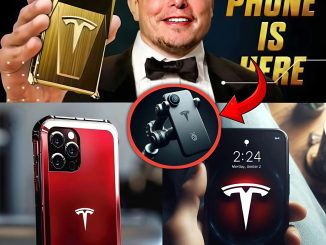
Tesla CEO Elon Musk has once again stunned the world with a groundbreaking announcement—the launch of an all-new Tesla model for 2025, designed to revolutionize the way we think about transportation. This new initiative is closely tied to Tesla’s ambitious Robotaxi project, a service set to reshape the future of ride-sharing by leveraging cutting-edge autonomous driving technology.
At the heart of this innovation is a bold new feature that allows Tesla owners to add or remove their vehicles from the Robotaxi fleet—functioning much like an Airbnb for cars. This means that by 2026, Tesla owners will have the option to rent out their vehicles when they are not in use, turning their cars into income-generating assets.
Tesla’s Vision for Autonomous Ride-Sharing
Musk’s announcement signals a major step forward in Tesla’s strategy to integrate full self-driving (FSD) technology into everyday life. The Robotaxi service will debut in Austin, Texas, in June 2025, initially utilizing Tesla-owned vehicles to test and perfect the system. Once the service proves successful, Tesla plans to open the platform to individual car owners by 2026, allowing them to participate in a fully autonomous ride-hailing network.
This peer-to-peer model, inspired by platforms like Airbnb and Uber, will enable Tesla drivers to earn passive income by renting out their self-driving cars when they don’t need them. Whether a Tesla owner is at work, traveling, or simply not using their vehicle, their car can autonomously pick up and drop off passengers, generating revenue without any effort from the owner.

How This Changes the Future of Transportation
With the introduction of this next-generation Tesla model, the company is not only pushing the limits of autonomous technology but also redefining vehicle ownership. Some key benefits of this revolutionary concept include:
– Monetizing Ownership – Tesla owners can turn their cars into an investment, earning money while they sleep, work, or travel.
– Reduced Transportation Costs – With a fleet of autonomous vehicles available on-demand, ride-sharing prices could drop significantly, making transportation more affordable.
– Sustainable Mobility – A fully electric Robotaxi fleet would help reduce carbon emissions and contribute to a greener, more sustainable future.
– Enhanced Accessibility – Autonomous ride-sharing could provide mobility solutions for people who cannot drive, such as the elderly or disabled.
What This Means for Tesla’s Future
Elon Musk has long been vocal about his vision for a world where self-driving cars dominate the roads, eliminating traffic congestion, improving safety, and transforming the way people commute. With the 2025 Tesla model and the Robotaxi network, that vision is closer to reality than ever before.
By pioneering fully autonomous, owner-managed ride-sharing, Tesla is poised to disrupt the transportation industry just as Uber and Airbnb did in their respective markets. The company is taking a bold step toward a future where car ownership is no longer just a personal expense, but a source of passive income.
Final Thoughts: A New Era of Smart Mobility
With this latest announcement, Elon Musk is once again proving that Tesla remains at the forefront of technological innovation and forward-thinking mobility solutions. As the world prepares for the arrival of autonomous Robotaxis in 2025, one thing is clear: Tesla is not just making cars—it is shaping the future of transportation.


